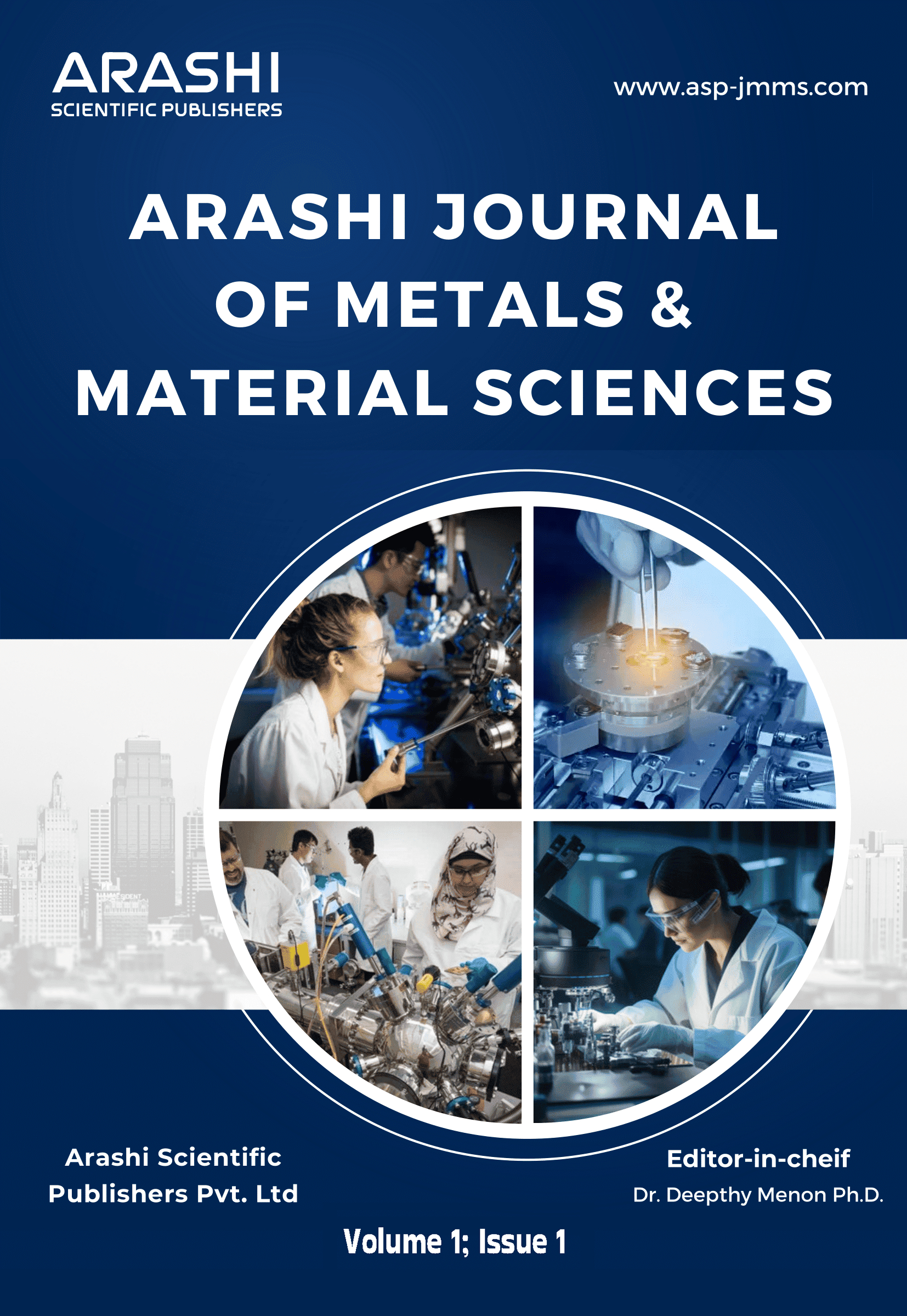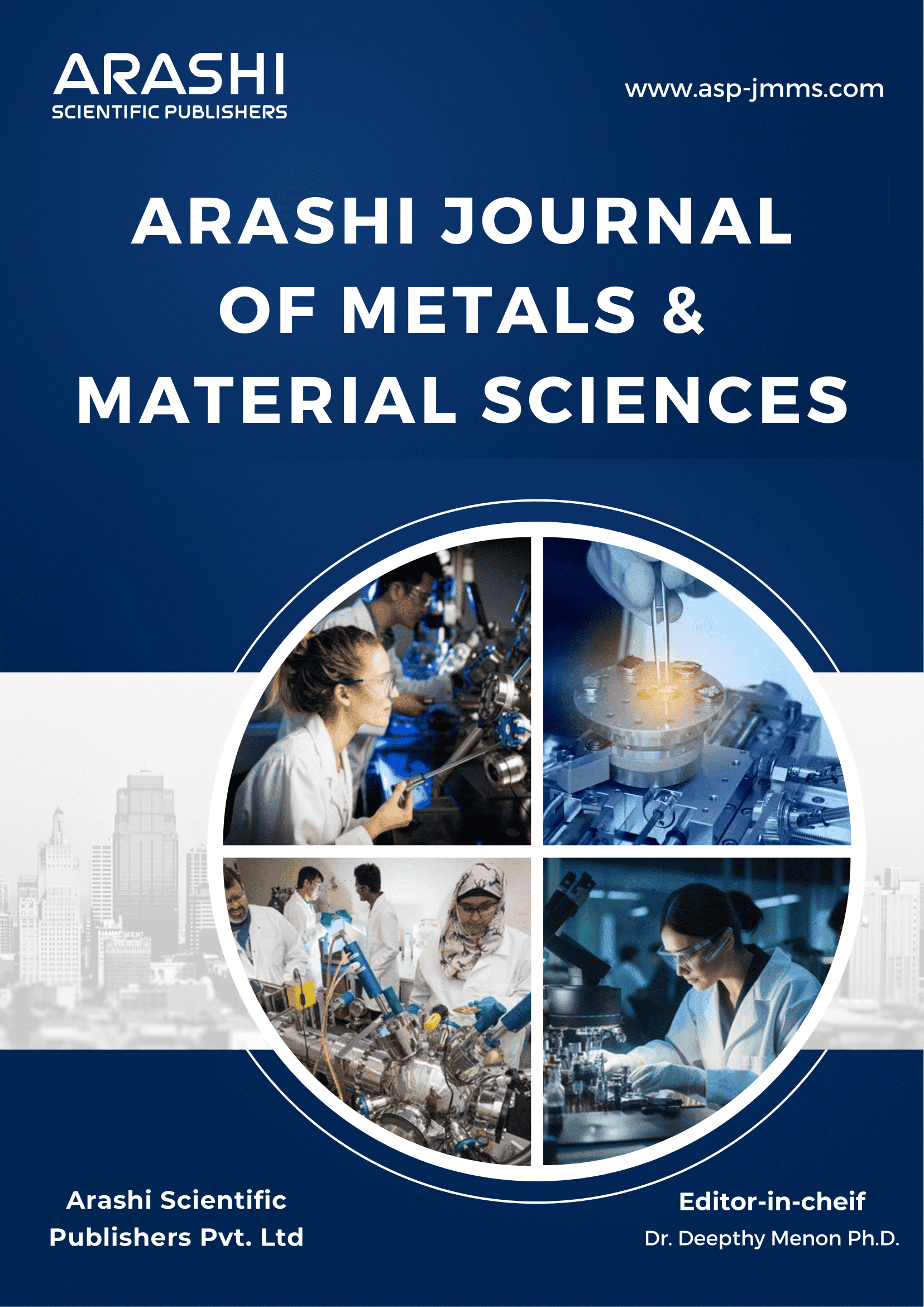Assembly of Au⁺ over deprotonated graphene oxide and its antibacterial activity: A molecular dynamics investigation
DOI:
https://doi.org/10.54646/jmms.2024.0006
சுருக்கம்
பாதோஜெனிக் பாக்டீரியாக்கள், ஆண்டிபயாட்டிக்குகளுக்கு எதிர்ப்புத் தன்மையைக் கொண்டிருப்பது சிகிச்சை முறையில் முக்கிய சவால்களை ஏற்படுத்துகிறது. சமீபத்தில், கிராபீன் அடிப்படையிலான நானோதுகள்கள் இத்தகைய எதிர்ப்பு கொண்ட வகைகளுக்கு சிறந்த பாக்டீரிய எதிர்ப்பு செயல்பாட்டைக் காண்பிக்கின்றன, குறிப்பாக தங்கம் (Au) அலங்கரிக்கப்பட்ட கிராபீன் ஆக்சைடு (GO) நானோதுகள்கள். இருப்பினும், அதன் பாக்டீரிய எதிர்ப்பு செயல்திறன் எப்படி செயல்படுகிறது என்பதற்கான அறிவியல் ஆதாரம் சரியாக புரிந்துகொள்ளப்படவில்லை மற்றும் கூடுதல் ஆராய்ச்சி தேவை. அணுஅளவிலான பௌதீக நிகழ்வுகளை ஆராய, மூலக்கூறு இயக்கவியல் (MD) சிமுலேஷன் வழக்கமாக பயன்படுத்தப்படுகிறது, இது எதிர்ப்பு நடத்தையின் நுட்பமான செயல்முறையைப் புரிந்துகொள்ள உதவுகிறது. இங்கு, நீர்ச் சூழலில் ஹைட்ரஜன் அயன்களை இழந்த GO (GO⁻) மற்றும் Au⁺ அயன்கள் ஒன்றிணையும் முறை MD சிமுலேஷன் மூலம் ஆய்வு செய்யப்படுகிறது. அதனை தொடர்ந்து, மாதிரி பாக்டீரியா மென்பிரேனுடன் GO⁻/Au⁺ கூட்டத்தின் பாக்டீரிய எதிர்ப்பு செயல்திறனை ஆராயப்பட்டுள்ளது. முடிவுகள், Au⁺ அயன்கள் பாஸ்பேட் தலை குழுவுடன் சேரும்போது, பாக்டீரியா மென்பிரேனில் பெரிய துளை உருவாக்கத்தை உணர்த்துகின்றன. GO⁻/Au⁺ கூட்டத்தின் செயல்பாடு, பாஸ்பேட் தலை குழுவின் திசையை இரட்டை அடுக்கு படலத்தின் ஹைட்ரோபோபிக் உள்புறத்தை நோக்கி மாற்றுகிறது, மேலும் நீர் மூலக்கூறுகளின் இயக்கத்துடன் இணைந்து மென்பிரேனின் ஒருமைப்பாட்டை சீர்குலைக்கிறது. உருவாக்கப்பட்ட துளை குறைந்தது 100 நானோசெக்கன்கள் நிலையாக இருக்கிறது, மேலும் கணிக்கப்பட்ட ΔGperm மதிப்பு -340 kJ/mol ஆகும். எங்கள் ஆய்வு, GO⁻/Au⁺-ன் பாக்டீரிய எதிர்ப்பு செயல்திறனுக்கான செயல்முறையை மேலும் ஆதரிக்கிறது, இது புதிய வகை பாக்டீரிய எதிர்ப்பு முகவர்களை உருவாக்க உதவக்கூடும்.
Abstract
Pathogenic bacteria which are resistant to antibiotics pose significant challenges in the treatment procedure. Recently, graphene-based nanoparticles (NPs) are found to display excellent antibacterial activity against such resistant strains, especially gold (Au)-decorated graphene oxide (GO) NPs. However, the mechanistic study behind its antibacterial activity is not understood and needs further research. Molecular dynamics (MD) simulation is routinely employed to investigate physical phenomena at the atomistic level, offering insights into the detailed mechanism behind the resistant behavior. Here, MD simulations are performed to investigate the assembly of deprotonated GO (GO⁻) and the Au ions (Au⁺) in an aqueous environment, and subsequently, the antibacterial activity of the GO⁻/Au⁺ assembly with a model bacterial membrane. The results indicate the formation of a large pore in the bacterial membrane, induced by the activity of Au⁺ to the phosphate head group. The activity of GO⁻/Au⁺ changes the orientation of the phosphate head group towards the hydrophobic interior of the bilayer, coupled with the flow of water molecules, ultimately disrupting the membrane integrity. The formed pore is stable for at least 100 ns with a calculated 1Gperm value of −340 kJ/mol. Our study provides further support to the mechanism of the antibacterial activity of GO⁻/Au⁺, which could help in the development of newer class of antibacterial agents.
-Photoroom.png)

